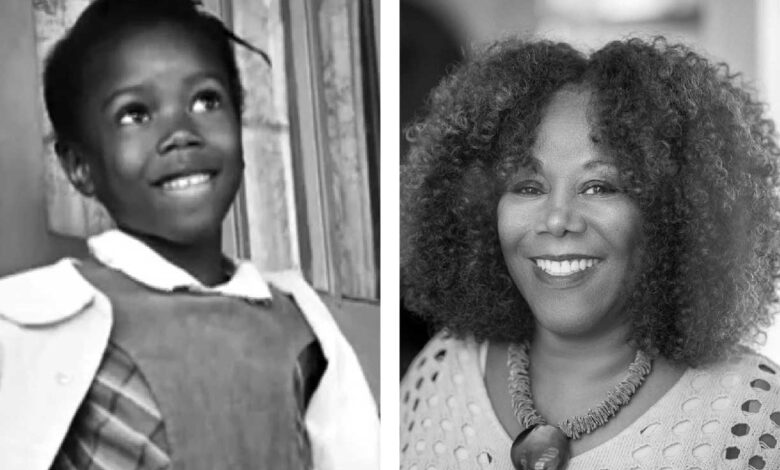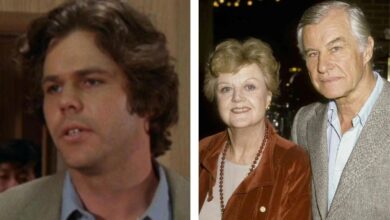Who is Ruby Bridges’s Father? All About Abon Bridges

Ruby Bridges is a very important person in American history. She was one of the first Black children to go to an all-white school in the South. This happened a long time ago, in 1960, in New Orleans, Louisiana. Ruby was only six years old, and her brave step helped change schools for everyone.
Bio
| Full Name | Abon Bridges |
| Date of Birth | January 20, 1931 |
| Place of Birth | Tylertown, Walthall County, Mississippi, USA |
| Date of Death | February 22, 1978 (aged 47) |
| Place of Death | New Orleans, Louisiana, USA |
| Parents | Ezell Bridges and Beatrice Cowart |
| Siblings | Carl Caine Bridges, Lela Mae Dillon, Matthew Bridges, Ella Mae Bridges, Mack J. Bridges, and others |
| Spouse | Lucille Commadore (married in 1953; separated in the late 1960s) |
| Children | Ruby Bridges, Malcolm, Jonah, Milton Keith Bridges, Michelle, and others (total of 8 children) |
| Occupation | Mechanic; previously worked as a gas station attendant and sharecropper |
| Military Service | U.S. Army, Korean War veteran; wounded in action on June 16, 1952; awarded the Purple Heart |
| Role in Civil Rights | Supported his daughter Ruby Bridges during her integration of William Frantz Elementary School in 1960; faced job loss and community backlash as a result |
| Legacy | Remembered for his courage and support during a pivotal moment in the Civil Rights Movement; his daughter Ruby Bridges became a symbol of school desegregation and civil rights activism |
Abon Bridges: A Father and a Veteran
Abon Bridges was born on January 20, 1931, in Mississippi. He married Lucille Commadore in 1953. Abon and Lucille had a family with several children, and Ruby was the oldest. Abon worked hard to support his family. He was a mechanic, which means he fixed cars and machines.
Before Ruby’s famous walk into school, Abon Bridges served his country. He was a veteran of the Korean War. This means he was a soldier during the war that took place in Korea in the early 1950s. He served in the Infantry.
During his time in the military, he was wounded and received a Purple Heart medal. This medal is given to soldiers who are injured in battle. This shows that Abon Bridges was a brave man even before his daughter became famous for her bravery.
Moving to New Orleans
Abon and Lucille Bridges first lived in Tylertown, Mississippi, where Ruby was born. But they wanted a better life and better chances for their children, especially a better education. This was a time when schools in the South were separated by race. Black children went to one school, and white children went to another. The schools for white children often had more books, better teachers, and nicer buildings.
To find more opportunities, Abon moved his family to New Orleans, Louisiana. This was a big change for the Bridges family. In New Orleans, Abon continued to work, sometimes at a gas station, to provide for his wife and children. Lucille also worked, taking on night jobs to help the family.
The Big Decision to Desegregate Schools
In 1954, the highest court in the United States, the Supreme Court, made a very important decision. They said that having separate schools for Black and white children was against the law and not fair. This decision is known as Brown v. Board of Education. However, many places in the South were slow to follow this rule.
In 1960, a court ordered New Orleans to start letting Black students go to the all-white schools. The school system gave a test to Black children to see who could go to these schools. Ruby Bridges was one of the children who passed the test.
This is where Abon Bridges faced a very difficult decision with his wife, Lucille. The National Association for the Advancement of Colored People (NAACP), a group that worked for equal rights for Black people, asked the Bridges family if Ruby could be one of the first Black children to attend William Frantz Elementary School, an all-white school near their home.
Abon was worried about Ruby’s safety. He knew that many white people in New Orleans were angry about the idea of Black children coming to their schools. He feared that sending Ruby to the school would put her in danger and could cause problems for their family. It is understandable that a father would feel this way, wanting to protect his child from harm.
Lucille’s Strong Belief and Abon’s Support
Ruby’s mother, Lucille Bridges, felt very strongly that Ruby should go to the school. She believed it was important for Ruby to get the best education possible, and the white schools were better. More than that, she felt it was a necessary step for all Black children. She saw it as a way to help change things and make schools fair for everyone in the future.
Lucille talked to Abon about her feelings. She was determined that their children should have more opportunities than they had. She knew that breaking down the walls of segregation was the only way for things to truly get better. Even though Abon was hesitant and afraid for Ruby, Lucille’s strong belief and determination convinced him. He agreed to let Ruby go to the all-white school.
The Challenges Abon and His Family Faced
Sending Ruby to William Frantz Elementary School was not like sending a child to school today. Every morning, when Ruby and her mother walked to school, they were met by angry crowds of white people. These people would yell mean things, hold up signs, and protest. Because of the threats, Ruby and her mother had to be escorted by federal marshals, who are like special policemen, to keep them safe.
This difficult situation also affected Abon Bridges. Because the Bridges family chose to send Ruby to the integrated school, they faced many problems in their community. Some people in New Orleans who were against integration made life hard for the Bridges family.
Abon lost his job. People who disagreed with his decision to send Ruby to the school stopped hiring him or perhaps pressured his employer to fire him. This made it very difficult for Abon to earn money and support his family.
Lucille also faced challenges. Some grocery stores refused to sell food to her. This was another way people tried to pressure the Bridges family and make them change their minds.
Even Ruby’s grandparents, who were sharecroppers and lived on land owned by someone else, were affected. They were forced off the farm where they had lived and worked for many years.
These were huge hardships for the Bridges family. Abon, as the father and provider, must have felt the weight of these problems heavily. It took incredible courage for him and Lucille to stand firm in their decision despite these difficulties.
Abon Bridges: A Quiet Strength
While Lucille Bridges is often highlighted for her strong will in the decision to send Ruby to school and walking with her daughter through the crowds, Abon’s role was also very important. He might have been hesitant at first, but he ultimately supported his wife and daughter.
His agreement allowed Ruby to take that historic step. His willingness to face the negative consequences, like losing his job, shows his commitment to his family and to the idea of a better future, even if it was hard in the moment.
Abon’s military service and receiving the Purple Heart also tell us something about his character. He was a man who had faced danger before and had shown bravery. This earlier experience might have given him a quiet strength to support his family through the challenges they faced during school integration.
Life After the First Year
After that first year, things slowly started to change. More Black children enrolled in William Frantz Elementary School, and the intense protests began to decrease. Ruby continued her education and eventually graduated from a high school that was no longer segregated.
Abon Bridges continued to live in New Orleans and work to support his family. While the public focus was often on Ruby and the historical significance of her actions, Abon and Lucille were the foundation of their family, navigating the long-term effects of their brave decision.
Abon Bridges passed away in 1978 at the age of 47. His life, though marked by the challenges of the Civil Rights Movement and the specific struggles his family faced, was also one of hard work, military service, and ultimately, support for his daughter’s historic role.





